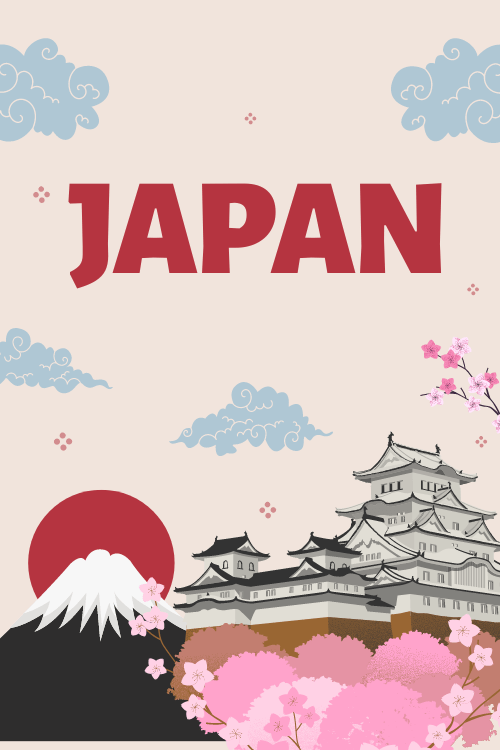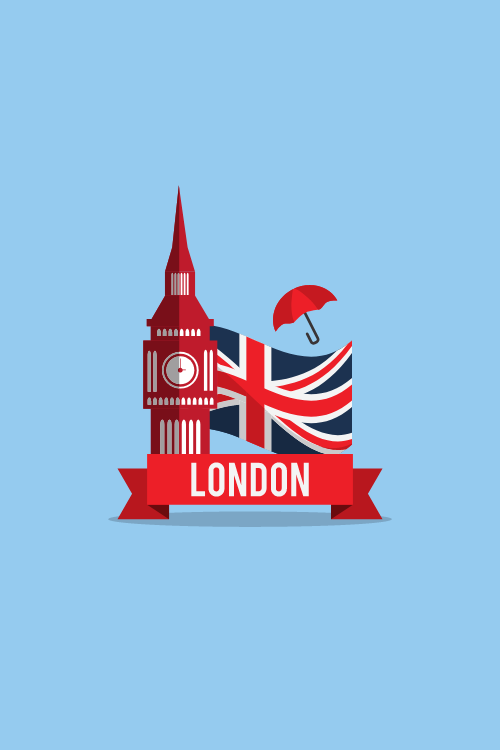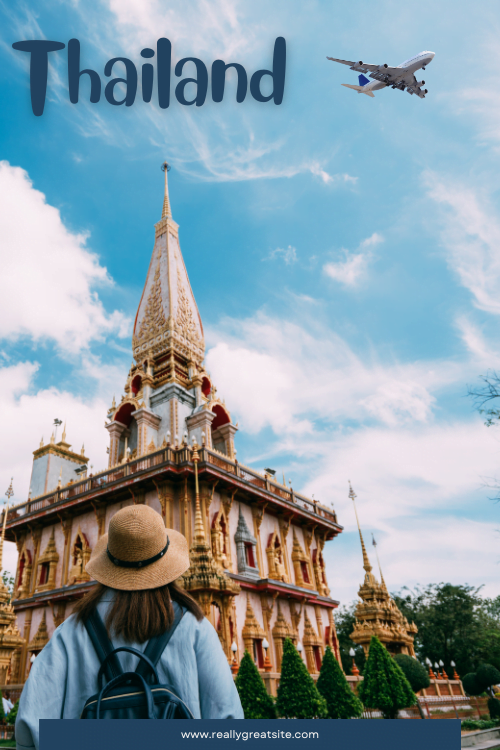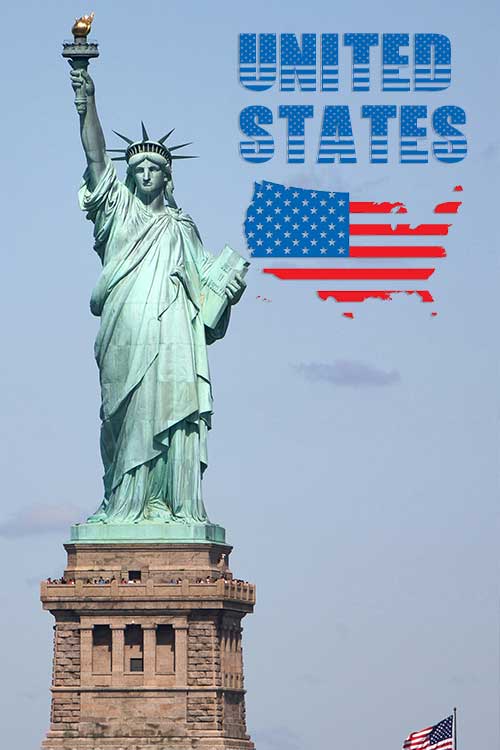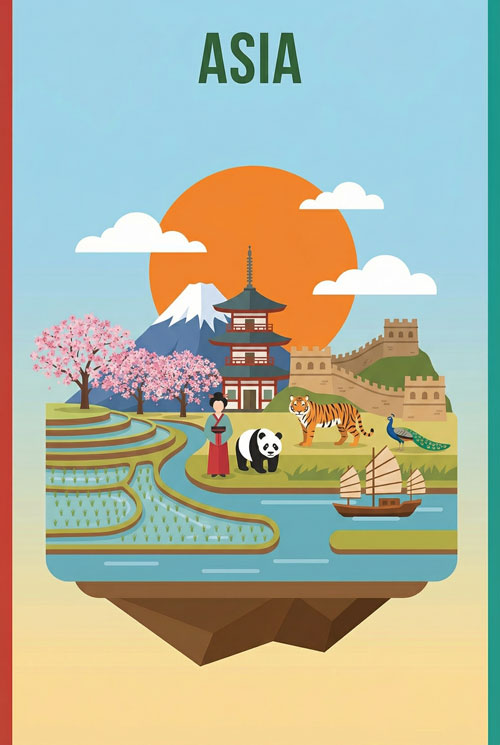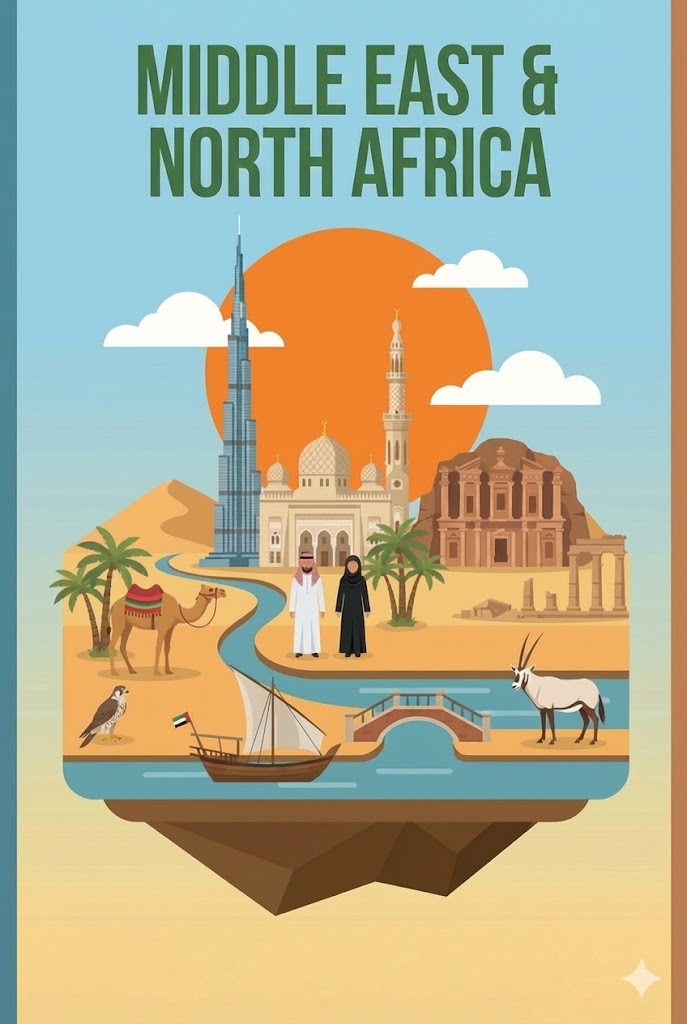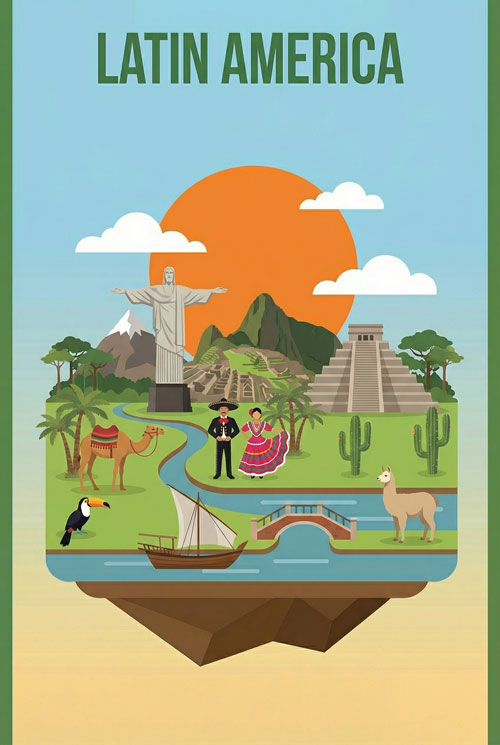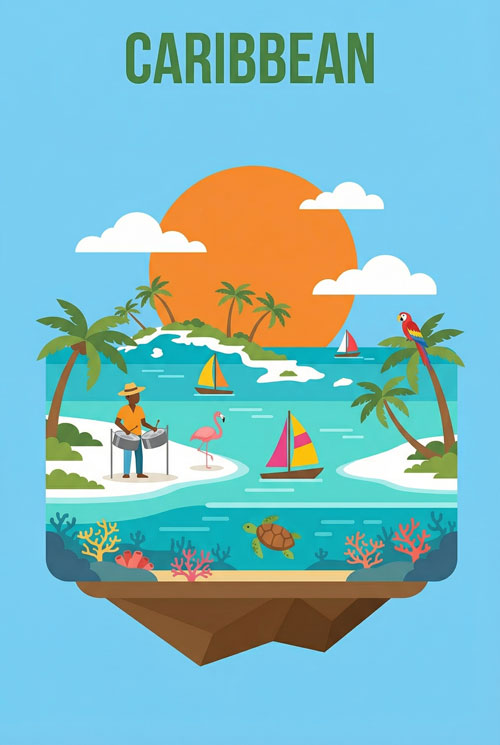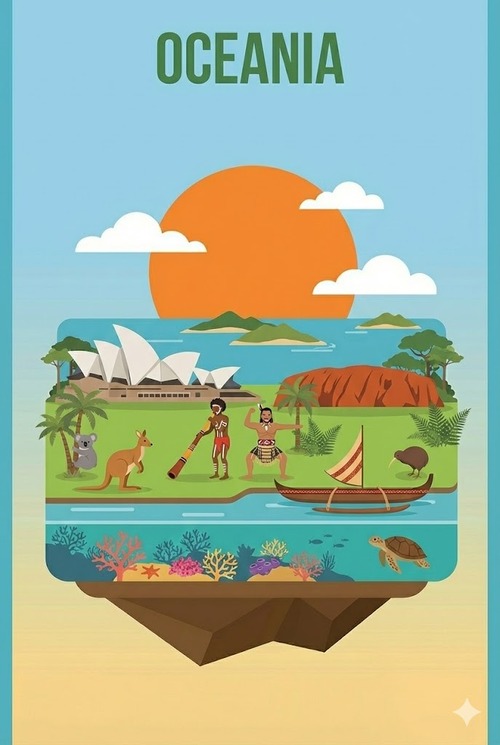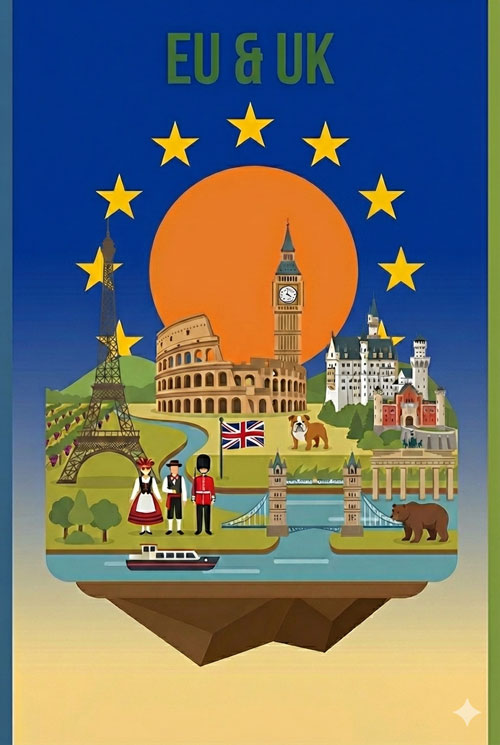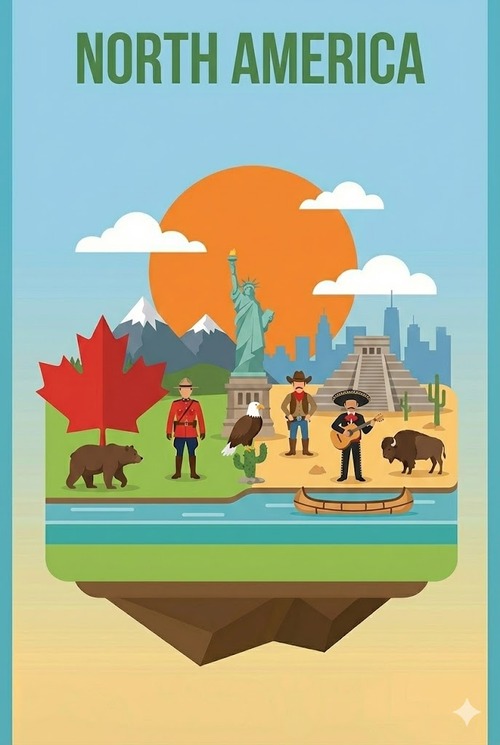eSIM Zimbabwe
The Best Time to Visit Zimbabwe: A Travelers Guide
Planning a trip to Zimbabwe often presents a captivating dilemma: should you time your visit for the peak of the safari season, when wildlife congregates in breathtaking numbers, or when the mighty Victoria Falls is a thundering, world-wonder spectacle?
The truth is, the “best time” to visit this Southern African jewel is not a single date on a calendar but a deeply personal decision, tailored to your priorities. This guide is designed to resolve that central conflict, offering a definitive resource for planning the perfect journey.
Whether you are a first-time safari-goer, an avid photographer, an adventure seeker, or planning a family vacation, this comprehensive breakdown will help you navigate the options by season, month, activity, and traveler type, ensuring your Zimbabwean adventure is everything you dream it to be.
The Best Time to Visit Zimbabwe
For the ultimate Zimbabwe adventure, aim for the shoulder months. This sweet spot combines great wildlife viewing with impressive waterfall flows, fewer crowds, and good weather.
April
Lush scenery meets powerful falls.
May
Perfect weather as the dry season begins.
June
Ideal conditions before peak season.
Zimbabwe’s Seasonal Rhythm
Zimbabwe has two main seasons, with transitional “shoulder” periods offering the best of both worlds.
Wet ‘Green’ Season
Nov – Apr
Lush landscapes, baby animals, and great birding, but wildlife is harder to spot.
Shoulder Season
Apr – Jun & Nov
The “sweet spot” with great weather, good game viewing, and powerful falls.
Dry Season
May – Oct
Peak wildlife viewing as animals gather at waterholes. Hot and dry, especially later in the season.
A Monthly Deep Dive (Harare)
Visualize the shifts in weather to plan your trip with precision. The charts below show average temperatures and rainfall days for Harare, the capital.
Average Temperature (°C)
Average Rainfall Days
Find Your Perfect Trip
Different travel styles call for different timing. Here’s a quick guide to help you choose the best months for your kind of holiday.
Ultimate Safari
Best: July to October
Animals congregate at waterholes in huge numbers. Expect intense predator action.
Victoria Falls Power
Best: February to June
Witness the ‘Smoke that Thunders’ at its peak, awe-inspiring flow.
High-Thrill Adventure
Best: August to December
The low-water season is perfect for white-water rafting and Devil’s Pool swims.
Family Holiday
Best: June to August
Mild weather and excellent, easy wildlife viewing to keep kids engaged.
Birdwatching
Best: November to April
The Green Season brings migratory birds in their vibrant breeding plumage.
Budget & Fewer Crowds
Best: January to March
This is the low season, offering the cheapest prices and a lush, green landscape.
A Year of Celebration
Immerse yourself in local culture by planning your trip around one of Zimbabwe’s unique events.
Harare Int’l Festival of Arts
One of Africa’s largest arts festivals, drawing international artists.
Hwange Game Count
A unique conservation event where visitors can help count wildlife at waterholes.
Kariba Tiger Fishing Tournament
A prestigious and exciting angling competition on Lake Kariba.
Jikinya Traditional Dance Fest
Celebrates indigenous dance with performances by primary school children.
Zimbabwe’s Travel Seasons: The Quick & Simple Answer
For travelers seeking immediate clarity, Zimbabwe’s travel calendar can be understood through its distinct seasons. The prime time for a classic safari is the Dry Season (May to October), a period that offers unparalleled game viewing as animals are drawn to the few remaining water sources in the parched landscape.
Conversely, for those who prioritize witnessing a full-flowing Victoria Falls and exploring lush, emerald-green landscapes ideal for birding and photography, the Wet/Green Season (November to April) is optimal. For many, the “sweet spot” that balances good wildlife sightings with an impressive display at the Falls lies in the Shoulder Seasons, particularly from April to June and again in November, offering a taste of the best of both worlds.
Table 1: Zimbabwe Travel Seasons: An Executive Summary
This summary provides an at-a-glance comparison to help travelers immediately identify which season best aligns with their primary interests before exploring the more granular details of the guide.
| Season | Months | Pros | Cons | Best For |
| Dry Season | May – October | Peak wildlife viewing, sparse vegetation for clear sightings, sunny days, pleasant temperatures (May-Aug), fewer mosquitos. | Extremely hot and dry (Sep-Oct), dusty conditions, can be crowded, Victoria Falls is at low flow, higher prices. | First-time safari-goers, wildlife photographers seeking classic shots, intense predator action, high-adventure activities at Victoria Falls. |
| Wet (Green) Season | November – April | Lush, green landscapes, dramatic skies for photography, peak birdwatching with migratory species, abundance of newborn animals, lower prices, fewer crowds. | Wildlife is dispersed and harder to spot in thick vegetation, heavy afternoon rains (especially Dec-Feb), high humidity, some lodges and roads may close. | Avid birdwatchers, landscape photographers, budget-conscious travelers, those seeking a more intimate and less crowded safari experience. |
| Shoulder Season | April – June & November | A fantastic “best of both worlds” compromise. Good game viewing, beautiful green scenery, Victoria Falls is still powerful (Apr-Jun), fewer crowds than peak season. | Weather can be unpredictable, especially in November. Some activities may still be closed (e.g., Devil’s Pool in April-June). | Travelers wanting to combine a strong safari experience with impressive views of Victoria Falls, and those seeking good value. |
When’s the Best Time to Visit Zimbabwe?
Safari or waterfall? Dry or green season? Find your perfect trip with this quick quiz!
Your ideal Zimbabwe season is…

Stay Connected in Zimbabwe!
Get affordable mobile data and avoid expensive roaming fees on your trip with an eSIM. Instant delivery, easy setup.
Get Your Zimbabwe eSIMA Comprehensive Month-by-Month Guide to Zimbabwe
This granular breakdown offers a detailed look at what to expect throughout the year, allowing for precise and informed trip planning.
The Wet/Green Season (November – March)
This is a period of dramatic transformation, where the parched earth is reborn under life-giving rains. It is a time of renewal, characterized by vibrant green landscapes, dramatic cloud-filled skies, and the arrival of new life.
While classic game viewing is more challenging, this season offers unique rewards for photographers, birdwatchers, and travelers seeking solitude.
November: The Unpredictable Shoulder
- Weather: November marks the onset of the rains, though their timing is unpredictable. The month can begin with the intense, dry heat of October carrying over, or it can be punctuated by refreshing afternoon thundershowers that cool the air.
- Wildlife & Landscape: The first rains trigger a dramatic greening of the landscape. While this can make wildlife harder to spot, it’s also the beginning of the birthing season for many antelope species, a poignant sight for many visitors. The country’s parks are generally quiet during this period.
- Victoria Falls: Water levels in the Zambezi River are typically at their lowest point of the year. This offers exceptionally clear, spray-free views of the underlying rock formations of the gorge but lacks the immense power and thunderous roar of the peak season.
- Activities & Events: This is arguably the best month to begin a birdwatching safari, as thousands of migratory birds arrive from Europe and North Africa, with some lodges guaranteeing sightings of over 50 species before breakfast. Culturally, visitors may be able to experience the Harare International Food Festival and the Jikinya Traditional Dance Festival, which celebrates indigenous dance through performances by primary school children.
December – February: The Heart of the Rains
- Weather: These months represent the core of the wet season, with hot, humid conditions and regular, often heavy, afternoon downpours. The landscape is at its most intensely green and lush, a stark contrast to the dusty plains of the dry season.
- Wildlife & Landscape: Due to the abundance of water everywhere, wildlife disperses widely across the national parks, and the thick, verdant bush makes spotting animals a significant challenge. However, this period is the peak of the birthing season. The plains are filled with newborn animals, which in turn can lead to dramatic predator-prey encounters for patient observers. For photographers, the combination of vibrant colors, dramatic skies, and baby animals offers unique and powerful photographic opportunities.
- Victoria Falls: The Zambezi River rises rapidly during this period. The Falls become increasingly powerful, and by February, the sheer volume of water generates so much mist and spray that it can obscure ground-level views of the natural wonder. A helicopter or microlight flight is the best way to appreciate the scale of the Falls at this time.
- Activities & Events: This remains the prime season for birdwatching, with resident and migratory species in full breeding plumage. Many safari camps and lodges offer lower “green season” rates, making it an attractive time for budget-conscious travelers. National holidays, including Christmas, New Year’s Day, and Robert Gabriel Mugabe National Youth Day (February 21st), are widely celebrated.
March: The Rains Subside
- Weather: The days remain warm and humid, but the frequency of rain begins to decrease, often confined to short, sharp afternoon showers that quickly clear.
- Wildlife & Landscape: The bush remains thick and verdant from the season’s rains, meaning game viewing is still challenging but not impossible. The landscape itself is stunningly beautiful and vibrant.
- Victoria Falls: Water levels are now approaching their absolute peak. This is a phenomenal time to witness the Falls, with immense power creating the famous “spray rainbows” that arc across the gorge.
- Activities & Events: The powerful flow makes this an excellent month for photography at Victoria Falls, capturing the raw force of nature. For those interested in cultural experiences, Holy Week is an important religious observance in the predominantly Christian country.
The Dry Season (April – October)
This is the quintessential safari season in Zimbabwe. The weather is characterized by clear blue skies, cooler temperatures, and a progressive drying of the landscape. As vegetation thins and water becomes scarce, wildlife congregates in extraordinary numbers, providing the spectacular sightings for which Zimbabwe is famous.
April – May: The Perfect Shoulder
- Weather: The rains have largely ceased, leaving behind a fresh, bright, and still-green landscape. The air is clean, with warm, pleasant days and mild nights, creating very comfortable conditions for travel.
- Wildlife & Landscape: Mana Pools National Park, a World Heritage site famous for its walking safaris, typically re-opens in April. As the land begins to dry out, wildlife viewing steadily improves, yet the landscape retains much of its green beauty from the wet season.
- Victoria Falls: This period marks the Peak Flow of the Zambezi River. The Falls are at their most powerful and spectacular, an awe-inspiring display of nature’s force. The resulting spray is immense, capable of soaking viewers from hundreds of meters away and making ground-level photography a significant challenge. To truly grasp the scale of the Falls during this time, aerial views from a helicopter or microlight are highly recommended.
- Activities & Events: This two-month window is often considered the “best of both worlds,” perfectly balancing a high-water Victoria Falls experience with increasingly good safari conditions. It is a culturally vibrant time, with the Harare International Festival of Arts (HIFA) and the Harare Jazz Festival drawing international crowds in April. Key national holidays include Independence Day on April 18th and Africa Day on May 25th.
June – August: Prime Winter Safari
- Weather: These are the winter months, defined by dry, sunny days under vast, clear blue skies. Afternoons are mild and wonderfully pleasant, but temperatures drop significantly at night and in the early mornings. In high-altitude areas like Hwange National Park, temperatures can even dip below freezing, requiring warm layers for game drives.
- Wildlife & Landscape: This is the heart of the peak game viewing season. Vegetation becomes sparse and dies back, and as natural water sources evaporate, animals are forced to congregate in huge numbers around permanent rivers and pumped waterholes, particularly in Hwange. This concentration makes wildlife exceptionally easy to find and observe for extended periods.
- Victoria Falls: The river’s flow is receding from its peak but remains very impressive. As the spray lessens, visibility from the viewpoints improves dramatically. Critically for adrenaline seekers, the low-water white-water rafting season typically begins in August, offering access to the most thrilling and challenging rapids just below the Falls.
- Activities & Events: The cooler, dry weather is ideal for more active pursuits like walking safaris and canoe safaris on the Zambezi. In the cities, cultural events include the Zimbabwe International Book Fair in July and the Zimbabwe International Film Festival in August. The nation also observes Heroes’ Day and Defence Forces Day in August.
September – October: Hot, Dry, and Intense
- Weather: This is the climax of the dry season, and temperatures soar. October, in particular, is known as “suicide month” for its intense, oppressive heat, with daytime temperatures often climbing into the 90s Fahrenheit (over 35°C) and sometimes exceeding 100°F (40°C). The landscape is arid and dusty.
- Wildlife & Landscape: The harsh conditions lead to exceptional and dramatic game viewing. Water is now incredibly scarce, forcing massive herds of animals, especially elephants in Hwange, to gather at the few remaining water sources. The high density of weakened herbivores creates a theater for predators, and interactions are at their most frequent and intense, offering raw and powerful sightings.
- Victoria Falls: The water flow is at its lowest, especially on the Zambian side, which can run almost dry. While the Falls lack their thunderous power, this period reveals the sheer scale and geology of the rock gorge. It is the best and often only time for unique activities like swimming in the Devil’s Pool on the edge of the precipice.
- Activities & Events: A unique opportunity for conservation enthusiasts arises in September with the annual Hwange Game Count, where visitors can join rangers in counting animal populations at waterholes. For anglers, the prestigious Kariba Tiger Fishing Tournament takes place in October.
Planning Your Trip Around Your Interests: An Activity-Based Guide
The concept of a single “best time” to visit dissolves when considering the diverse goals of travelers. A more effective approach is to align the timing of a trip with its primary purpose.
This goal-oriented framework moves beyond a simple calendar to provide strategic advice, ensuring travelers can optimize their journey for the experiences they value most.
For the Ultimate Wildlife Safari: Maximizing Your Sightings
For travelers whose primary objective is to witness Africa’s iconic wildlife in abundance, the verdict is clear: the dry season, specifically from July to October, is unparalleled for a classic big game safari. The excellence of this period is not a matter of chance but the result of interconnected ecological factors.
First, the scarcity of water is the main driver of animal behavior. As the landscape dries and seasonal pans evaporate, wildlife is compelled to gather around the few permanent water sources, such as the Zambezi River or the man-made waterholes in Hwange National Park. This concentration makes animal locations highly predictable for safari guides, dramatically increasing the frequency and quality of sightings.
Second, the lack of rain leads to a thinning of vegetation. The grass is shorter, and trees lose their leaves, creating clear, unobstructed lines of sight for both safari-goers and photographers. This visibility is crucial for spotting elusive animals like leopards, which are more easily concealed in the lush greenery of the wet season.
The combination of these two factors creates a perfect storm for predators. The high density of herbivores concentrated around waterholes provides ample hunting opportunities. Furthermore, the diminished nutritional quality of the dry vegetation can weaken prey animals, making them more vulnerable. This results in a higher frequency of dramatic predator-prey interactions, a key draw for many safari enthusiasts seeking to witness the raw dynamics of the African bush. Key destinations during this time include Hwange for its legendary elephant herds and Mana Pools for its immersive walking and canoe safaris.
To Witness the Majestic Victoria Falls: A Tale of Two Flows
The “best” time to see Victoria Falls is entirely dependent on a visitor’s definition of the word. The experience is radically different depending on the volume of water flowing over the precipice, creating a choice between witnessing raw power and participating in unique activities.
High Water (Peak Flow – approx. February to June)
The experience during this period is one of overwhelming sensory immersion. The Zambezi River, swollen by upstream rains, unleashes its full force, creating the world’s largest continuous sheet of falling water. The sound is a thunderous roar that can be heard from miles away, and the spray is so immense that it creates a localized rainforest and drenches everything in its path, often forming constant, vivid rainbows.
While this is an awe-inspiring spectacle of raw power, the downside is that the sheer volume of mist can completely obscure the view of the falls from many ground-level vantage points. Furthermore, key water-based activities like the Devil’s Pool swim and low-water rafting are closed for safety reasons.
Low Water (approx. August to January)
As the dry season progresses, the water volume decreases significantly, especially on the Zambian side of the falls. This reveals the staggering geology of the Batoka Gorge, showcasing the sheer rock faces that have been carved out over millennia. The reduced spray allows for crystal-clear visibility and excellent photographic opportunities of the gorge itself.
This is the only time when adrenaline-pumping activities are possible, including swimming in the famous Devil’s Pool or Angel’s Pool at the very edge of the falls, and embarking on the most intense white-water rafting trips through the exposed, challenging rapids. The trade-off is a less powerful and less thunderous spectacle compared to the high-water season.
Table 2: Victoria Falls Activity Planner: High vs. Low Water
For many travelers, the availability of specific activities is the deciding factor in their planning. This can lead to significant disappointment if a trip is booked without understanding the strict seasonal constraints of these activities.
The following table provides a clear, activity-based guide to prevent such issues, empowering travelers to align their visit with their must-do experiences.
| Activity | Best Months | Required Water Level | Status & Notes |
| Peak Power Viewing | April – May | High | Optimal. The falls are at their most powerful and thunderous. Views may be obscured by spray. |
| Ground-Level Photography | July – September | Medium to Low | Optimal. Less spray provides clear views of the full width of the falls and the gorge. |
| Helicopter/Microlight Flights | April – June | High | Optimal. The best way to appreciate the immense scale and power when ground views are obscured. |
| White-Water Rafting (High-Thrill) | August – December | Low | Optimal. Rapids are most exposed and challenging. The season is dictated by safety. |
| White-Water Rafting (Moderate) | Jan – Feb & June – July | High | Possible. A modified, less intense route is run, bypassing the most dangerous rapids. The river is typically closed from March to May. |
| Devil’s Pool / Angel’s Pool Swim | August – January | Low | Optimal. This activity is only open when water levels are low enough to be safe. |
| Lunar Rainbow Viewing | July – September | Medium | Optimal. Occurs during the full moon. Requires a combination of sufficient spray and clear night skies. |
For Avid Birdwatchers & Photographers: A Nuanced Perspective
For specialists like birders and photographers, the “best time” is not a single season but a nuanced choice based on specific subjects and desired outcomes.
Birdwatching
For birdwatching enthusiasts, the wet season from November to April is unequivocally the prime time. The logic is simple: the rains trigger an explosion of life. Insects and amphibians become abundant, providing a feast for birds.
More importantly, this period marks the arrival of hundreds of migratory bird species from Europe and northern Africa. These visitors, often in their vibrant breeding plumage, dramatically increase the diversity of species that can be spotted, making it a paradise for ornithologists.
Photography
For photographers, the choice is more complex and depends entirely on the desired aesthetic and subject matter.
- Dry Season (May-October): This season is ideal for classic wildlife photography. The sparse vegetation means cleaner backgrounds and fewer obstructions, allowing the animal to be the clear subject of the frame. The high concentration of animals at waterholes provides more frequent and predictable opportunities for capturing behavior and interactions. The clear, sunny skies provide consistent, bright light.
- Green Season (November-April): This season is superior for landscape photography and capturing a different kind of wildlife story. The scenery is lush, vibrant, and saturated with color. The skies are often filled with dramatic, moody clouds that create spectacular lighting, especially during sunrise and sunset. The presence of baby animals and colorful migratory birds adds a unique and poignant element to photographic portfolios. This is the time to capture images of Africa in its most verdant and renewed state.
Photographers should remember key techniques regardless of season: shoot during the “golden hours” just after sunrise and before sunset for the best light; use a beanbag or other support to stabilize long lenses on safari vehicles; and always focus on the animal’s eyes to create an engaging and sharp portrait.
For Budget-Conscious Travelers & Crowd-Averse Explorers
For those looking to experience Zimbabwe’s wonders without the peak-season price tag or crowds, the “Green Season” from January to March, along with the shoulder months of November and April, offers the best value.
This period corresponds with the low season for tourism. With fewer travelers, the demand for accommodation and tours decreases, leading to significantly lower rates and greater availability. This allows for a more exclusive experience, with fewer vehicles at wildlife sightings and a more intimate atmosphere in camps and lodges.
While there are trade-offs—game viewing is more challenging in the thick bush, and the weather can be rainy—the benefits of a quieter, more personal, and more affordable trip through a stunningly lush landscape are compelling for many travelers.
Tailoring Your Zimbabwe Trip for Every Traveler
Beyond activities and seasons, the ideal Zimbabwean itinerary is shaped by the traveler themselves. Different groups, such as families and adventure seekers, have fundamentally different needs, constraints, and definitions of a perfect holiday.
Recognizing these distinctions is key to planning a truly successful trip.
The Perfect Family Safari in Zimbabwe
Planning a family safari requires careful consideration of safety, lodging, and, most importantly, age-appropriate activities. The definition of a “family-friendly” trip changes dramatically with the age of the children, as many of Zimbabwe’s signature activities have strict age minimums.
For example, walking safaris and canoeing are often restricted to those 16 and older, while white-water rafting has a minimum age of 15. This makes a segmented approach essential.
For Families with Younger Children (ages 7-12)
- Best Time: The dry season from June to August is often ideal. The weather is mild and pleasant during the day, and the high visibility of wildlife on game drives keeps younger children engaged and excited.
- Activities: The focus should be on activities that are safe and engaging for all. Standard vehicle-based game drives are the cornerstone of the safari experience. These can be supplemented with boat cruises on the Zambezi, visits to cultural villages to interact with local communities, and fun-filled canopy tours at Victoria Falls.
- Lodge Considerations: Safety and specialized programs are paramount. Fenced lodges, such as Ivory Lodge in Hwange, provide peace of mind for parents. Many camps, like Somalisa Acacia, offer dedicated family tents and child-friendly activities. Some operators, like Wilderness, even have a “Bush Buddy” program where a dedicated staff member engages children with nature-based activities, giving parents some time to relax.
For Families with Teenagers (ages 13+)
- Best Time: The period from August to October can be perfect. This aligns the trip with the optimal season for the high-adventure activities that appeal to teenagers.
- Activities: With older children, the range of possibilities expands dramatically. This is the prime time for thrilling white-water rafting on the Zambezi, canoeing safaris, and adrenaline activities like the gorge swing and zip-lining at Victoria Falls. Depending on the specific camp’s policy, teenagers may also be able to participate in guided walking safaris.
- Lodge Considerations: Lodges located in private concessions are an excellent choice, as they often offer a wider and more flexible range of activities beyond standard game drives. Camps like Ruckomechi in Mana Pools, which have family rooms and varied activities, are well-suited for this age group.
An Adventure Traveler’s Guide to Zimbabwe
For the active traveler, the “best time” to visit is dictated not by general weather patterns but by the specific conditions required for their chosen sport.
- Canoeing & Kayaking (Mana Pools, Upper Zambezi): The heart of the dry season, from June to October, is the ideal window. During this time, the Zambezi River’s flow is more manageable, and the concentration of wildlife along the banks provides spectacular, eye-level encounters with everything from elephants to crocodiles.
- White-Water Rafting (Victoria Falls): For the ultimate thrill, the low-water season from August to December is unmatched. As the water level drops, the river’s rapids become more exposed, creating the powerful and technical Grade 5 conditions for which the Zambezi is world-renowned.
- Hiking & Trekking (Eastern Highlands, Matobo Hills): The cool, dry winter months from May to September offer the most pleasant conditions for exploring on foot. The weather is mild, there is little to no rain, and the trails are clear, making it perfect for multi-day hikes in the mountainous Eastern Highlands or tracking rhino in the granite landscapes of Matobo.
Beyond the Main Circuit: Discovering Zimbabwe’s Hidden Gems
To truly understand the depth and diversity of Zimbabwe, one must venture beyond the well-trodden path of Victoria Falls and Hwange. The country holds a wealth of lesser-known destinations that offer unique landscapes, profound history, and a sense of remote wilderness increasingly rare in Africa.
Exploring these hidden gems elevates a trip from a standard holiday to an expert-level exploration.
- Gonarezhou National Park: Translating to “Place of Elephants,” this rugged and remote park in Zimbabwe’s southeast is a true wilderness for the experienced safari-goer. It forms part of a vast transfrontier park with South Africa and Mozambique and is famed for its stunning red sandstone Chilojo Cliffs that overlook the Runde River. The best time to visit for wildlife viewing is during the dry season from June to October.
- Matobo National Park: A spiritual landscape of surreal, balancing granite domes (kopjes), Matobo is a UNESCO World Heritage site rich in both nature and culture. It is one of the best places in Africa to track white and black rhino on foot with expert guides and holds thousands of ancient San rock art sites. While it can be visited year-round, the cooler dry months from May to September provide the most comfortable conditions for tracking and hiking.
- The Eastern Highlands (Nyanga, Vumba): Forming a natural border with Mozambique, this lush, mountainous region offers a dramatic contrast to the lowveld savanna. With rolling hills, misty forests, and cascading waterfalls, it’s a cool-weather paradise for hiking, birding, and trout fishing. The dry season from May to September is best for outdoor activities.
- Lake Kariba & Matusadona National Park: In a landlocked nation, the vast, man-made Lake Kariba serves as Zimbabwe’s “seaside.” It offers a unique safari experience focused on water-based activities, including multi-day houseboat trips, fishing for the formidable tiger fish, and game viewing by boat along the shoreline of Matusadona National Park. The dry season is optimal for seeing wildlife congregate at the water’s edge.
- Great Zimbabwe Ruins: This is the historical heart of the nation and the source of its name. The magnificent stone city, a UNESCO World Heritage site, was the capital of a vast kingdom that flourished between the 11th and 15th centuries. The scale and intricacy of its mortarless stone walls are a testament to a sophisticated ancient civilization. It can be visited any time of year, though the winter months offer clearer views with less overgrown vegetation.
Your Essential Zimbabwe Travel Toolkit
A well-planned trip relies on practical preparation. Consolidating essential information on packing, finances, and health into a single, accessible toolkit removes common travel anxieties and ensures a smooth and enjoyable journey.
What to Pack: A Seasonal Checklist
Packing for Zimbabwe requires a layered approach to handle fluctuating temperatures. Neutral, muted colors like khaki, beige, and olive green are recommended for all seasons, as they are less conspicuous to wildlife and do not attract insects. Bright colors and white are generally discouraged, and camouflage-patterned clothing is strictly forbidden for civilians.
- Core List (Year-Round):
- Lightweight, breathable clothing (cotton/linen shirts and t-shirts).
- Comfortable, sturdy walking shoes (closed-toe is essential for safari).
- A wide-brimmed hat, sunglasses, and high-SPF sunscreen for sun protection.
- Effective insect repellent, particularly for evenings.
- A good pair of binoculars (at least 8x magnification) is non-negotiable for quality wildlife viewing.
- Camera with extra batteries and memory cards.
- A basic first-aid kit with personal medications.
- Swimwear for lodge pools.
- Dry Season Additions (May – October):
- Warm layers are absolutely essential. Early morning game drives and evenings can be very cold. Pack a fleece jacket, a warm sweater or mid-layer, gloves, and a beanie (a warm hat).
- Wet Season Additions (November – April):
- A lightweight, waterproof jacket or poncho is crucial for the inevitable afternoon downpours.
- Quick-drying clothing is highly advantageous.
- Waterproof bags or cases to protect cameras, phones, and other electronics are strongly recommended.
Visas, Currency, and Tipping Etiquette
Navigating local logistics is a key part of travel planning.
- Visas: Most visitors, including those from the US, UK, EU, Australia, and Canada, can obtain a visa on arrival in Zimbabwe. It is crucial to have a passport with at least six months of validity from the date of entry and a minimum of three blank pages. For travelers planning to visit neighboring Zambia or take a day trip to Botswana, the KAZA Univisa is an excellent and cost-effective option, allowing multiple entries between Zimbabwe and Zambia for 30 days.
- Currency: The US Dollar (USD) is the primary currency used by and for tourists in Zimbabwe. It is essential to bring sufficient cash in small denominations to cover expenses like visas, tips, and purchases at local markets. ATMs are notoriously unreliable, and credit cards are only accepted at some large, upscale hotels and restaurants. Do not rely on being able to withdraw cash or use cards, especially in remote areas.
- Tipping: Tipping is a customary and highly appreciated gesture for good service, as it significantly supplements the income of those in the service industry. While not compulsory, it is a standard practice.
- Safari Guides: A guideline is US$10-20 per guest, per day.
- General Camp/Lodge Staff: US$10-20 per guest, per day, typically placed in a communal tip box to be shared among all staff (kitchen, housekeeping, etc.).
- Restaurants: 10-15% of the total bill is standard for good service.
- Porters and Transfer Drivers: A few dollars (e.g., US$1-2 per bag for a porter) is appropriate.
Health & Safety Essentials
- Health:
- Malaria: The risk of malaria is a serious consideration. The risk is highest during the warm, wet season (November to April) and lowest during the cool, dry winter. However, it is strongly recommended to consult a doctor or travel clinic about antimalarial medication well before your trip, regardless of the season. Using insect repellent and wearing long sleeves in the evenings is a critical preventative measure.
- Other Risks: A Yellow Fever vaccination certificate is required if you are arriving from a country with a risk of transmission. Schistosomiasis is a risk in some freshwater lakes and rivers, so it is advised to avoid swimming or wading in untreated water.
- Safety:
- Zimbabwe is generally considered a safe destination for tourists, and the people are known for being warm and welcoming. Standard safety precautions, such as being vigilant with valuables and avoiding walking alone at night in urban areas, should be observed.
- In national parks and wildlife areas, the greatest risk comes from the animals themselves. Always adhere strictly to the instructions of your safari guide. Never get out of the vehicle without permission, and maintain a respectful distance from all wildlife.
Frequently Asked Questions (FAQ)
- What is the absolute cheapest time to go to Zimbabwe?
- A: The period from January to March, during the height of the rainy season, typically offers the lowest prices on accommodation and tours. This is considered the low season due to challenging conditions for wildlife viewing and potential for heavy rain.
- How many days do I need to visit Zimbabwe?
- A: A minimum of 7 to 10 days is recommended to comfortably experience a combination of Victoria Falls and one major national park, such as Hwange. A 14-day itinerary would allow for a more comprehensive exploration, potentially including a third location like Mana Pools National Park or Matobo Hills.
- Is it better to see Victoria Falls from the Zimbabwe or Zambia side?
- A: The Zimbabwean side is home to roughly 75% of the viewpoints of the falls and, crucially, its main cataracts flow year-round. This makes it the more popular choice for a consistent viewing experience. The Zambian side offers unique, closer perspectives and is the access point for swimming in the Devil’s Pool during the low-water season.
- Is Zimbabwe a safe destination for a family safari?
- A: Yes, Zimbabwe is widely regarded as a safe and welcoming destination for families. The key to a successful family safari is careful planning, which includes choosing the right lodges (some are fenced for extra security with young children) and selecting age-appropriate activities that all family members can enjoy.
- Do I need to be physically fit for a Zimbabwe safari?
- A: The level of fitness required depends entirely on your chosen activities. Standard game drives require minimal physical fitness. However, more adventurous activities like multi-day walking safaris, canoeing on the Zambezi, and hiking in the Eastern Highlands require a moderate level of fitness to be fully enjoyed.
